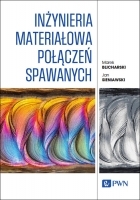Zalecana postać systemowego fundamentu zespolonego *
Recommended shape of system of combined foundation
Mechanik nr 07/2016 - XX Międzynarodowa Szkoła Komputerowego Wspomagania Projektowania, Wytwarzania i Eksploatacji
STRESZCZENIE: Przedmiotem pracy jest zdefiniowanie zalecanej, rozumianej jako najbardziej praktycznie użytecznej, postaci systemowego fundamentu zespolonego uprzednio opracowanego przez autora. Ten system konstrukcyjny jest przeznaczony do bezpiecznego posadowienia silnie obciążonych budynków na gruntach o bardzo niskiej nośności i na terenach aktywnych sejsmicznie. Proponowany system konstrukcyjny fundamentu dzięki swej budowie wewnętrznej cechuje się możliwością pochłaniania drgań oraz nie wymaga stosowania głębokich wykopów. Jego elementy składowe mogą przyjmować różnorodne kształty i w różny sposób rozmieszczane w jego przestrzeni. W pracy przedstawiono najprostszą postać elementów pośrednich wraz ze sposobem ich ekonomicznego rozmieszczenia w przestrzeni takiej konstrukcji, co umożliwia rozdzielenie sił przyłożonych do węzłów obciążenia na bardzo dużą liczbę węzłów brzegowych, które niekoniecznie muszą być zlokalizowane w strefie obwodowej fundamentu. Prezentowana postać systemu ma cechy optymalnego rozwiązania technicznego spełniającego w sposób zadawalający często sprzeczne wymogi konstrukcyjne z wymogami natury funkcjonalnej.
SŁOWA KLUCZOWE: fundament, grunt o niskiej nośności, teren sejsmiczny
ABSTRACT: Subject of the paper is to define the recommended and considered as practically the most useful shape of the system of combined foundation previously invented by the author. The structural system is intended for needs of the safe location of the heavily loaded buildings located on subsoil of very small load carrying ability and in the earthquake areas. Proposed structural system of the foundation, due to its inner build, has an inherent feature of absorbing energy caused by vibrations and it does not require to make the deep trenches. Its component parts can take various forms and they can be arranged in different ways in its space. In the paper there are presented the simplest shapes of intermediate members together with an economic way of their distribution in space of such a system what makes possible to spread forces, applied to the load nodes, among possible big number of the boundary nodes, which can be not necessarily placed along perimeter of the foundation. Presented shape of the system has characteristics of an optimum technical solution, which in satisfactory way can fulfill sometimes contradictory structural and functional requirements.
KEYWORDS: foundation, subsoil of small load capacity, earthquake area
BIBLIOGRAFIA / BIBLIOGRAPHY:
- Rębielak J. Fundament zespolony, Politechnika Wrocławska, Polska, Patent Nr 149760, z dnia 31 sierpnia 1990 r., zgłoszenie patentowe nr P-265885, z dnia 25 maja 1987 r.
- Wiłun Z. Zarys geotechniki, Wydawnictwa Komunikacji i Łączności, Warszawa, 1987.
- Biernatowski K. Fundamentowanie, PWN, Warszawa, 1984.
- Ledwoń A.J. Budownictwo na terenach szkód górniczych, Arkady, Warszawa, 1983.
- Moehle J., Bozorgnia Y. i in. Case studies of the seismic performance of tall buildings designed by alternative means, Report for the Tall Buildings Initiative, PEER Report 5 (2011) Pacific Earthquake Engineering Research Center, College of Engineering, University of California, Berkeley, CSSC Report 11-02.
- Rębielak J. Systemowy fundament zespolony, zgłoszenie patentowe, Patent Nr 221 971 z dnia 14 marca 2016 r., Urząd Patentowy Rzeczypospolitej Polskiej, zgłoszenie nr P.394745, z dnia 2 maja 2011 r.




















